Key Takeaways
Once educators have designed an overall approach to remote instruction that leverages technology, pedagogy, and relationships to effectively engage students, they can begin to integrate specific blended instructional practices to meet individual needs. Educators should think about how to:
- Collect and use data synchronously and asynchronously
- Create personalization points by allowing for differentiation around pace, path, place, and modality, as well as through offering opportunities for choice and agency
- Put the focus on mastery by integrating structures that allow students to advance based on mastery of content rather than seat time
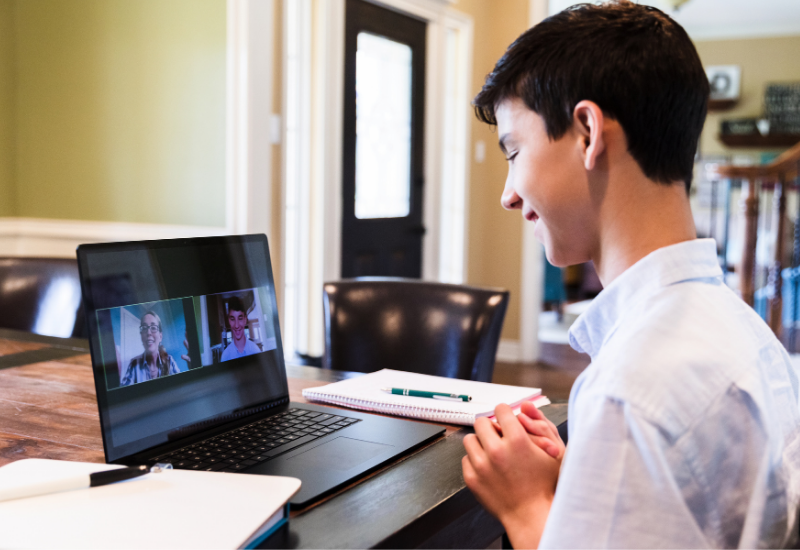
What is the problem?
For many educators, the shift to remote learning can be fear-inducing as they are asked to adjust their practices and use new tools to support learners. However, educators can still rely on many of the strong instructional practices that drove outcomes in more familiar traditional settings. Remote instruction simply necessitates implementing these strategies in new ways through a blend of remote modalities (asynchronous, synchronous, analog, and digital), building off of already established best practices in blended instruction.
Why is it important?
Within remote learning implementation, teachers make choices about how to use and blend different modalities during instruction, matching the mode of learning to their objectives to address students’ specific needs in ways that are aligned with content and development goals. This ensures that the aim of the lesson or activity matches the way in which students engage and show mastery. Educators must determine how to implement time-tested instructional practices within blended, remote settings.
The research says...
TLA’s review of the available research suggests that effective remote instruction does not depend on a specific tech tool or modality – but rather how well educators implement any tool to support instructional objectives. In remote settings, it is particularly important that educators do not merely replicate an existing instructional practice online; rather, they need to consider how that practice translates to an online setting and what additional benefits they can leverage by using blended tools.
- In the history of educational technology research, it is well established that technology as a delivery mechanism (e.g., whether something is online or face-to-face) has no direct impact on student learning outcomes.” (Ahn, 2017)
- In “studies in which online learning and face-to-face instruction were described as identical or nearly so [...] effects were larger [...] when the curricular materials and instruction varied between the online and face-to-face conditions.” (Means et al, 2013)
- “Different approaches to remote learning suit different tasks and types of content.” (Education Endowment Foundation, 2020)
How: Solution
When designing effective remote instruction, it is imperative for educators to combine multiple modalities and match them to specific learning objectives. When designing for remote learning, educators and students can work together using tools that leverage four modalities:
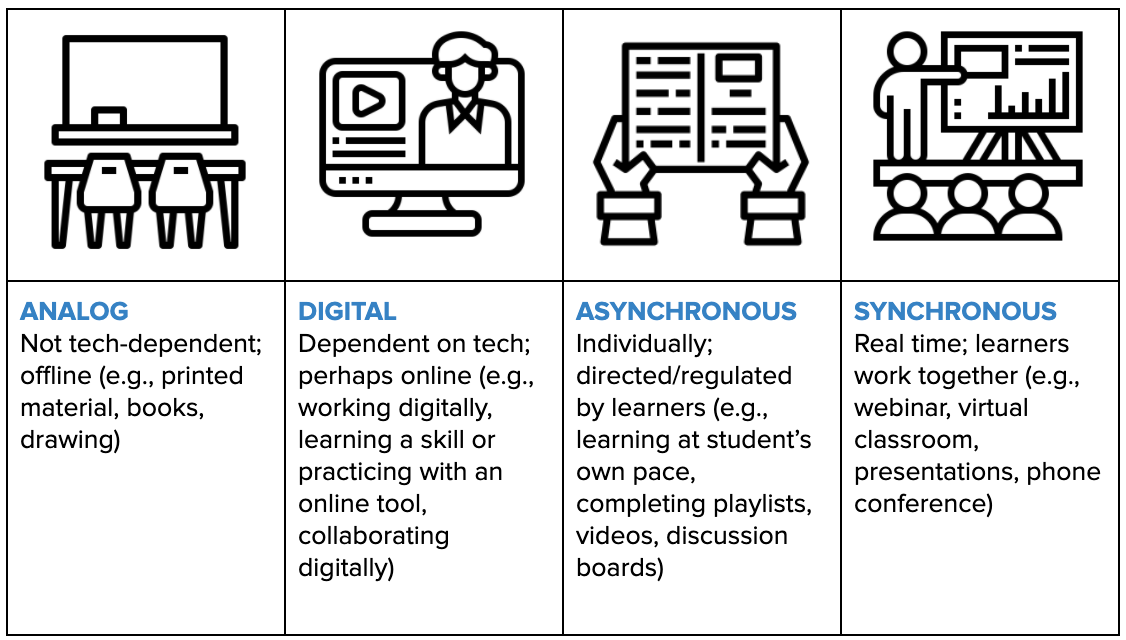
These modalities are the building blocks for creating students’ remote instructional experiences. Like in any in-person learning experience, teachers need to match the modality to their objectives as well as student need, engagement, content, and level. The graph below shows various examples of remote instruction within the intersection of each of these modalities.
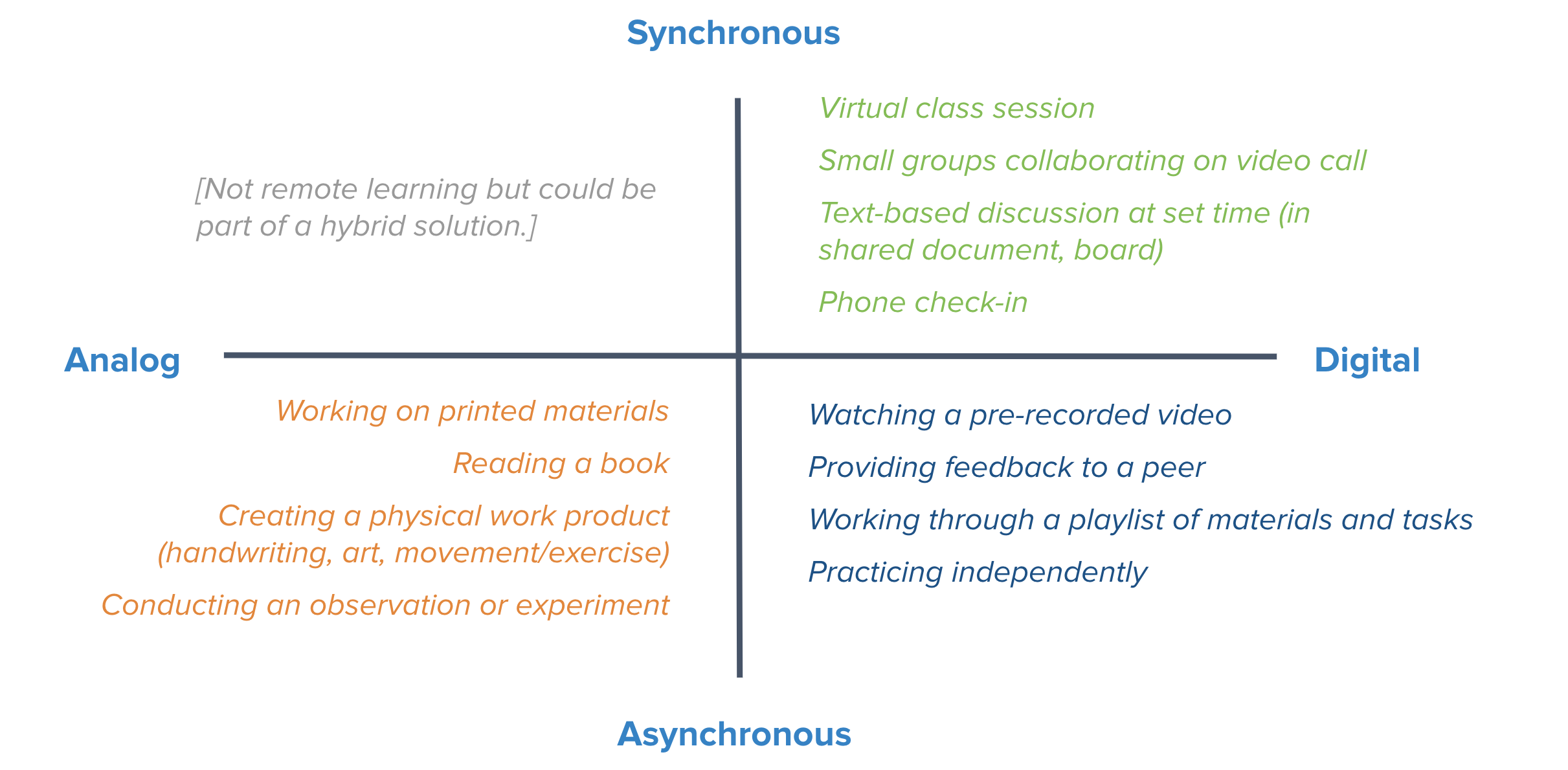
Designing remote instruction involves combining and varying these modalities throughout the week, day, or even lesson to ensure the modality meets the objective in an engaging, effective way. Some examples of remote instruction design include:
- Goal of the Lesson: Introduction to a new topic or concept
- Type of Activity:
- Asynchronous playlist that includes videos, readings, and opportunities for application
- Asynchronous choice board for exploration (e.g., analog poster project using technology for research; reading a book excerpt and pulling out key concepts; virtual collaborative document that prompts each student to research different information and fill in their findings)
- Synchronous small-group instruction to kick off a concept with additional teacher support
- Goal of the Lesson: Going deeper, clarifying misconceptions, and applying learnings to the real world
- Type of Activity:
- Synchronous virtual Socratic seminar
- Synchronous small-group time with teacher on video call
- Asynchronous choice board (either digital or analog) to illustrate mastery and application
The following three sections focus on how to build off of “matching the mode to the objective” and how to leverage these same modalities to implement powerful instructional practices – around data, personalization, and mastery-based learning – to drive student outcomes.
Collecting and using data in real time
When thinking about how to collect and use data within the remote space, it is important to first ask these questions:
- Why am I collecting data? (e.g., to measure mastery, benchmark pre-knowledge, build groups, get to know students better, reflect on your practice)
- How am I collecting data? (e.g., written, verbal, exit tickets, assessment)
- What type of data am I collecting? (e.g., formal, informal, formative)
By finding clarity around your “why, how, and what,” you can better gauge which modality matches your needs. Here are some examples of how to leverage various modalities to collect and use data in the remote space. As you explore the example strategies and resources below, ask yourself:
- Would this strategy work in my context? Why or why not?
- What data do I lean on daily, weekly, and monthly when designing instruction?
- Can I use one of these strategies to collect that data?
- How can I implement this strategy remotely (if it is not remote already)?
Sample ideas for collecting and using data across modalities are shown in the graph below.

Strategies/Resources
Explore the additional resources below to discover additional ways to assess and utilize data within the remote space.
Explore these TLA resources for additional guidance:
- Today's One Thing for Teachers: Assessing for Learning
- Problem of Practice: How to Use Data to Adjust Instruction
Incorporating personalization points
Personalization is a key driver for improving engagement in and commitment to remote learning. While the mandate to personalize instruction might seem daunting, teachers can make this goal more concrete by considering specific points for personalization – that is, opportunities to differentiate, offer choices, and motivate.
Personalizing instruction means enabling access for all students through differentiation based on needs, interests, and even goals. It can also mean offering differentiated options around pace, path, place, and modality. Allowing students to choose how and when they engage with content is a great first step towards personalization and increased engagement. To ensure students are making “good choices,” you need to build a strong foundation for self-directed learning – as noted in Step 1 of this series.
Sample personalization points across modalities are shown in the graph below. As you explore these examples, ask yourself:
- What data do I have that can help me prioritize where and how to effectively personalize? (i.e., student profiles, diagnostic data, entrance tickets, etc.)
- How can I implement strategies I used in person within remote instruction?
- What are other ways I can offer options to my students around pace, path, place, and modality, given the new tools I have at my disposal (i.e., technology, flexibility in time and new content)?
- How can I create more opportunities for choice and agency across modalities – both digital and analog, synchronously and asynchronously?

Strategies/Resources
Explore the additional resources below to discover additional ways to incorporate personalization points.
The following resources from TLA and other organizations in the field provide additional guidance.
- Today’s One Thing for Teachers: Differentiating Instruction in a Virtual Setting
- Small-Group Instruction & Differentiation in Remote Learning
- Playlist Building 101
Focusing learning on mastery
Remote instruction offers the opportunity for greater self-pacing and individualization. As you consider in-the-moment strategies, it is important to think about how learning activities will support students’ achievement of mastery rather than just engagement based on time. Consider how to connect activities explicitly to learning objectives (literally and figuratively, by helping students understand that connection themselves) and articulate a meaningful progression they should follow. Steps to consider when implementing remote, mastery-based learning include:
- Clearly mapping out a progression of the standards and learning objectives
- How will we (teachers and students) reflect upon and assess existing mastery?
- How do the learning objectives or competencies build off each other toward mastery of grade-level standards?
- Defining and building alignment around what mastery looks like
- How will students be able to demonstrate mastery?
- For teaching teams, how can we ensure this is consistent across grade levels, subjects, and/or the whole school?
- How will we communicate progress to students and families?
- How will students be graded?
- Building in opportunities for spiraling
- How are students offered content in multiple ways, multiple times throughout their learning experience?
- Will I offer opportunities for multiple “tries” at mastering content?
- Are these practices classroom-based and/or consistent across the school?
- Offering multiple pathways based on mastery
- How can we use remote modalities to allow flexibility to have students work at their own pace?
- If working in partnership with other classrooms, can we offer cross-classroom and/or multi-age options to increase access to support, remediation, and acceleration activities?
After you have reflected on these considerations and questions, you can then think about implementation and what strategies and remote modalities should be leveraged to meet your needs as well as the specific needs of your students. Here are some examples of how to leverage various modalities to address some of the considerations above. As you explore the example strategies and resources below, ask yourself:
- In what ways am I currently mapping, tracking, and/or sharing mastery of standards?
- Am I currently offering options to ensure students are progressing based on mastery? If not, how can I start?
- How can I implement some of these strategies within my own remote instruction?
- How do I start building a culture where students own and understand their own mastery?
Sample ways to emphasize mastery across modalities are shown below.
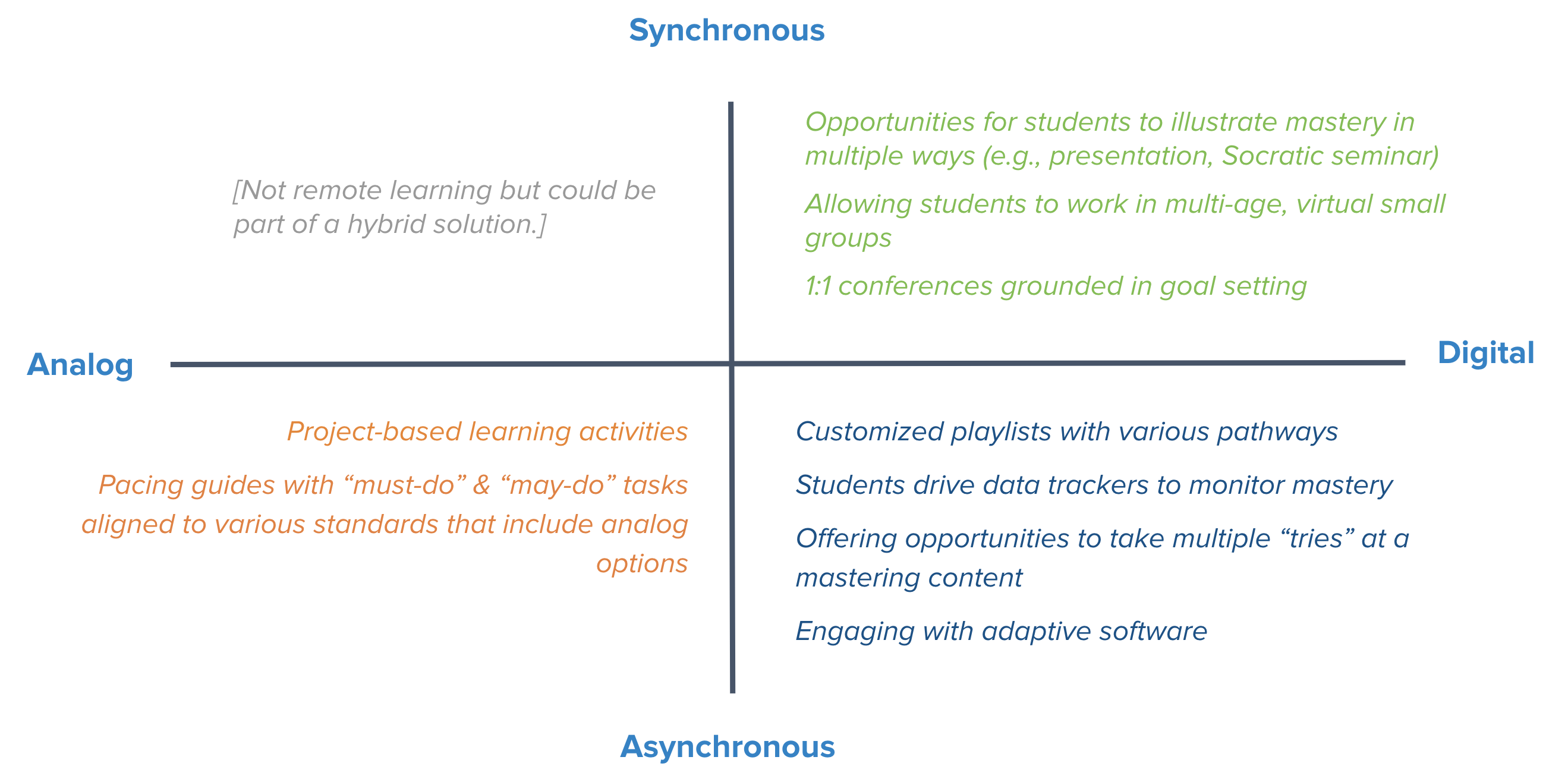
Strategies/Resources
Take it further
To learn more about these powerful instructional practices and how to train others to implement these strategies in their classrooms, explore the additional resources below.
Driving Remote Instructional Quality and Improvement: This webinar slidedeck, built for and presented to principals and teachers around the country, focuses on effective instructional design within the remote space.
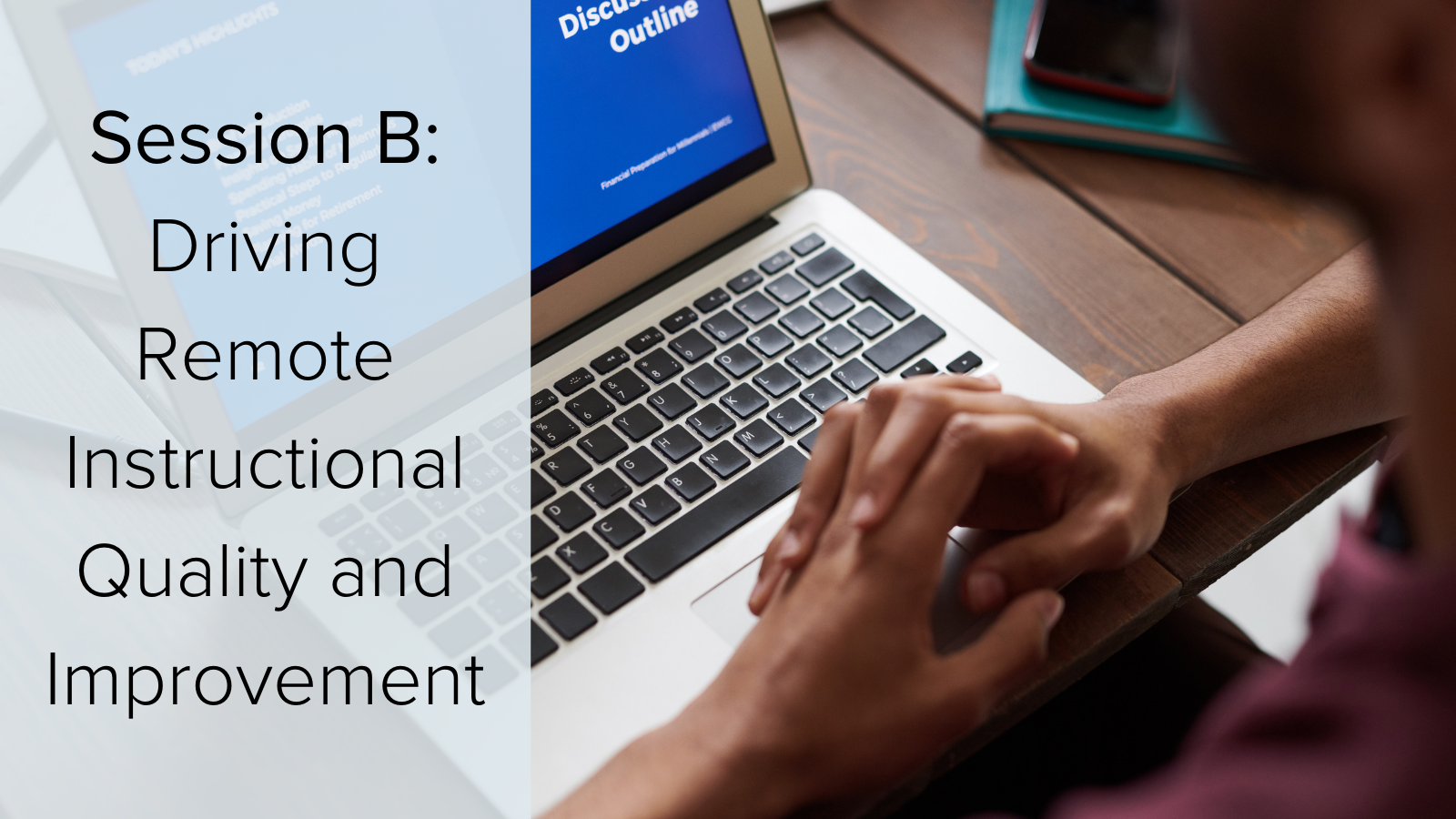
2020 Remote Resource Guide: This resource guide accompanies the webinar listed above and contains playlists of various resources focused on the three areas of support.
Additional examples and strategies:
Curated Collection, High-Quality Remote Instruction: This resource by Transcend shares additional strategies and examples to effectively implement the powerful instructional strategies mentioned above, alongside other ideas.
All of these resources are free and open to use, so feel free to share and adapt, with attribution to The Learning Accelerator. Please send any questions, comments, or additional information to us at info@learningaccelerator.org.